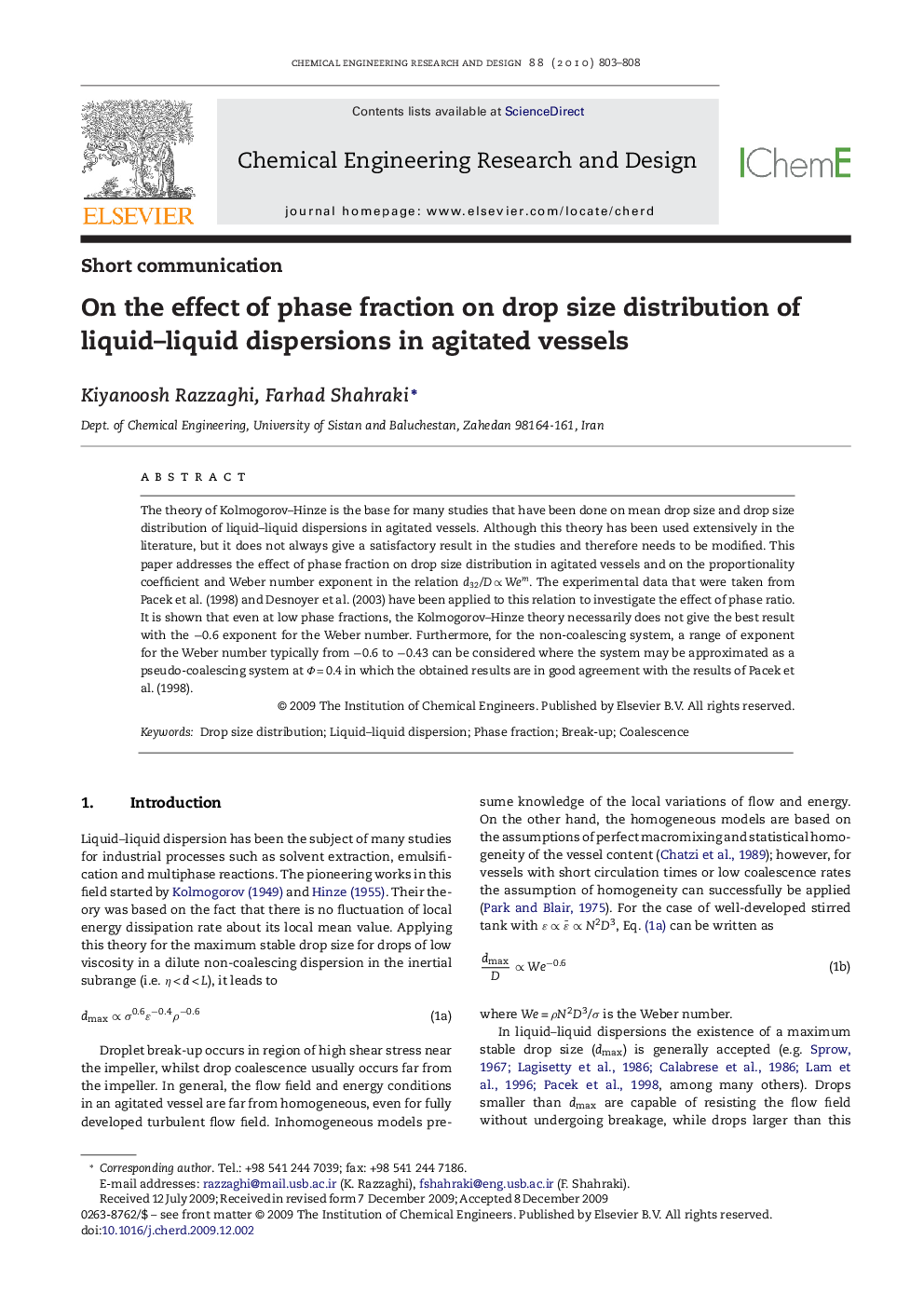| Article ID | Journal | Published Year | Pages | File Type |
|---|---|---|---|---|
| 622147 | Chemical Engineering Research and Design | 2010 | 6 Pages |
The theory of Kolmogorov–Hinze is the base for many studies that have been done on mean drop size and drop size distribution of liquid–liquid dispersions in agitated vessels. Although this theory has been used extensively in the literature, but it does not always give a satisfactory result in the studies and therefore needs to be modified. This paper addresses the effect of phase fraction on drop size distribution in agitated vessels and on the proportionality coefficient and Weber number exponent in the relation d32/D ∝ Wem. The experimental data that were taken from Pacek et al. (1998) and Desnoyer et al. (2003) have been applied to this relation to investigate the effect of phase ratio. It is shown that even at low phase fractions, the Kolmogorov–Hinze theory necessarily does not give the best result with the −0.6 exponent for the Weber number. Furthermore, for the non-coalescing system, a range of exponent for the Weber number typically from −0.6 to −0.43 can be considered where the system may be approximated as a pseudo-coalescing system at Φ = 0.4 in which the obtained results are in good agreement with the results of Pacek et al. (1998).
